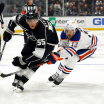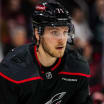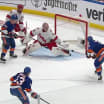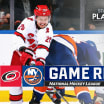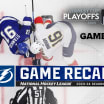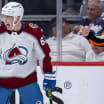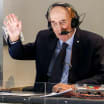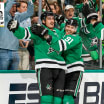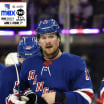DETROIT --Jeff Blashill receives a report the morning after each Detroit Red Wings game. The information ranges from raw data to sophisticated statistics, and what the coach cares about most is scoring chances, a metric that is more complex than it might seem.
Blashill gives inside look at in-depth use of analytics for Red Wings
Coach has developed intricate method to track scoring chances

© Icon Sportswire/Getty Images
The first place his eyes go is the total scoring chances for each team. If he's looking at players, the first place his eyes go is the even-strength plus-minus in terms of scoring chances for each individual. Digging deeper, he can see breakdowns of scoring chances by situation (such as 5-on-5, power play and penalty kill), type (such as forecheck, rush and face-off) and grade (A or B).
"It is the No. 1 thing I go back and look at," Blashill said. "Did we out-chance them, or did they out-chance us? Did a certain player create chances or give up chances, and to what degree? Ultimately, that's really what the game is about."
Put aside the result. How was the process?
"The emotion of wins and losses cloud your judgment, and they cloud how you feel about how the game went," Blashill said. "I've used scoring chances lots to tell our team, 'Listen, we lost last night, but here's what the scoring chances were. If we do that [in the future], you're winning for sure,' and vice versa, 'Hey, we're winning right now, but we're getting out-chanced. If we keep doing this, we're not going to keep winning.'
"It's an easy way to make sure your team is focused on how you're actually playing, not on how the results have gone. You're taking away the frustration of losing or the joy of winning. I believe it's helping you make a clearer decision on how you played and what you have to correct."
It isn't easy to track scoring chances, though, because it isn't clear what a scoring chance is. You must come up with criteria that cover a wide range of scenarios in a fast, free-flowing game and apply them consistently. It's part science, part art. It's always evolving, and each team does it differently.
Teams are loathe to share their secrets for competitive reasons, and to be clear, Blashill didn't give away all the Red Wings'. But he gave NHL.com a glimpse of how one team tracks scoring chances and the thought that goes into the process.
"I think scoring chances is the best evaluation tool of how the team has played, who had the better chance to win the hockey game, which players are creating more than they're giving up," Blashill said. "But we use lots of other things and take everything with a grain of salt."
* * * * *
Seems simple, right? You know a scoring chance when you see one.
But it isn't simple, because it's subjective.
"Scoring chances can cause lots of debate in every coaching room in the NHL, or really in hockey, because there's a lot of different opinion on what's a scoring chance and what's not a scoring chance," Blashill said. "Over time, I've tried to educate myself on what's the best way to measure."
Blashill played goalie at Ferris State from 1994-98 and began coaching as an assistant there from 1999-2002. Back then, the coaches would pop in VHS tapes, watch games and track scoring chances as a staff. Scoring chances were based mainly on shot location, and shot location was mainly the house- or home-plate-shaped area in front of the net.
What was a Grade A scoring chance? On offense, when the players rose to their feet on the bench thinking they were about to score. On defense, when you winced thinking you were about to be scored upon.
That was the process for a long time. But as Blashill rose through the college, junior and professional ranks, becoming coach of the Red Wings in 2015-16, so too rose the age of analytics. There are now metrics like expected goals, the probability of shot attempts becoming goals based on formulas weighing the rates at which several variables have correlated to goals in the past.
The Red Wings hire a third-party company to gather data, and their analytics staff uses that data to calculate expected goals with their own models. They use many of the same criteria to track scoring chances that they do in their expected goals models. The difference is, they can account for things that their expected goals models cannot, such as the velocity of a shot, what a player is asked to do in their system and the impact of a player on a play.
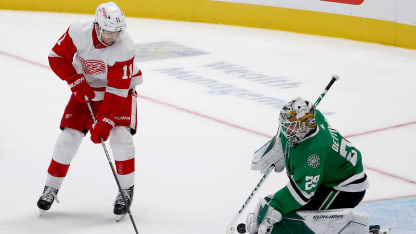
© Tom Pennington/Getty Images
"Over time, I've tried to talk to different people I respect in the world of analytics about scoring chances, and I think the guys that are really sharp in analytics would tell you that it still remains the No. 1 measurable," Blashill said. "I think most of the measurables that we have right now are somewhat incomplete, and so the one that I value the most is scoring chances."
For consistency, the same staff member tracks scoring chances for the Red Wings, and the staff constantly goes over the scoring chances afterward to make sure they are done the way Blashill wants them to be.
Shot location remains important, but the Red Wings have tweaked the edges of the house or home plate, identifying an inner slot where the NHL average shooting percentage is highest and an outer slot where the NHL average shooting percentage is next-highest.
Other factors include how much the goalie has to move, how much time the goalie has to get set, how much space the shooter has from defenders, and whether the shooter handled the puck or one-timed it.
For example, an inner-slot shot won't count as a scoring chance if it's weak and into a stationary goalie, but a bad-angle shot will count if it's a backdoor one-timer at a goalie pushing across the crease.
"There's more to a scoring chance than where the shot comes from, and one of the things I've learned from people a lot smarter than me -- but it does make sense to me as a former goalie -- the degree of which the goalie has to move to make that save is another huge factor to whether it's a scoring chance or not," Blashill said.
Can a missed shot be a scoring chance? Depends.
"I'm ultimately not trying to measure the goalie; I'm trying to measure the story of the game," Blashill said. "If we get a breakaway and miss the net, that's a scoring chance for us. If we're on a 2-on-1 and get a great shot off and miss the net, that's still a scoring chance for us. I might not give the guy that missed the net a chance, but I'm giving the team a scoring chance.
"We say that if a player makes a defensive play to negate the shot from hitting the net, then it's not a scoring chance. So if you give up a 2-on-1 and get a stick on it, even though you gave up a dangerous rush, it's not a scoring chance."
What rises to the level of a Grade A? Same criteria. Still some gut feel.
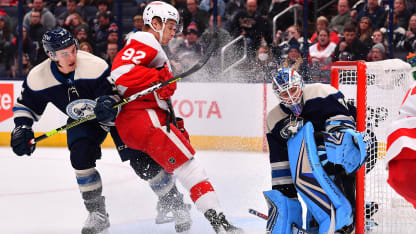
© Ben Jackson/Getty Images
"Is it from a prime-time shot location?" Blashill said. "Did the goalie have to move a significant amount? We don't have it defined exactly, but a significant amount. Was the shot one-timed or shot quickly? Was it a rebound? Rebounds are huge. Was it a tip in the air? Tips on the ice don't have the same expected goals as a tip in the air.
"And so, did it meet enough of those criteria to give it an A? It doesn't have to check a certain number."
Another significant point: When the Red Wings track scoring chances for players, they aren't "on ice," meaning a player does not get a plus or minus simply because he was on the ice when a scoring chance occurred. He has to have been involved in the play. Defensively, he is absolved if he wasn't responsible in Detroit's system.
"It's a journey," Blashill said. "I don't do it the same way I did it 15 years ago. In fact, for a period of time, as recently as maybe the last few years, we used to give each player a one, two or three depending on the impact you had on the chance. In the end, it made it more difficult and not as clear to see, and when I talked to math people, they told me it's not worth it. It'll even out in the end, so I went away from that.
"There's been a lot to it to try to get it as powerful a tool as possible."
* * * * *
When the NHL Puck and Player Tracking improves and the teams harness the data better, the available information will be more precise, from shot location and velocity, to the distance between shooter and defender, to how far a goalie moves to make a save. Expected goals models will evolve further.
"Then I think you take some of the subjectivity of coaches watching it out, and it becomes really based on your expected goals models," Blashill said.
But for now, the Red Wings will keep tracking scoring chances this way. The players see the team reports after each game. Blashill doesn't give the players their individual reports after each game but might use the reports to give players feedback after 10-game segments.
The goal isn't to formulate or bolster an argument. It's to find out and illustrate what's really going on.
Detroit is off to an 8-9-3 start and ranks 20th in the NHL in goals per game (2.70). Last season, the Red Wings finished second-to-last (2.23) ahead of only the Anaheim Ducks (2.21).
"Who's created more than they've given up, and does it match what I think in the game?" Blashill said. "Sometimes if it doesn't match, I go back and watch and say, 'OK, was I off on my evaluation? Or was it just one of those games where a player played really well and it didn't go his way, or vice versa?' Like anything else, it's a tool to help you judge. We don't make full decisions on it."

